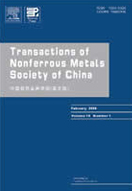27Al MAS-NMR study of inorganic polymer formation at
ambient temperature
ambient temperature
(1. National Core Research Center for Hybrid Materials Solution, Pusan National University, Busan 609-735, Korea;
2. School of Material Science and Engineering, Pusan National University, Busan 609-735, Korea;
3. INTChem Co., Ltd., Suwon 443-373, Korea)
2. School of Material Science and Engineering, Pusan National University, Busan 609-735, Korea;
3. INTChem Co., Ltd., Suwon 443-373, Korea)
Abstract: Inorganic polymers are a novel class of materials formed by the polymerization of silicon, aluminium and oxygen species to form an amorphous three-dimensional framework structure. The basis of this process is the alkaline solutions to induce a certain amount of Si and Al atoms to dissolve from a feedstock such as aluminosilicate. A study of 27Al MAS-NMR was carried out in an attempt to understand the reaction mechanism of the inorganic polymerization at ambient temperature. Scanning electron microscopy (SEM) and X-ray diffractometry (XRD) were also employed to establish the composition and microstructure of the inorganic polymerization. Specimens were prepared with different Al/Si mole ratios from the starting materials. The higher the Al content, the more sufficient the Al atoms that can combine with SiO4, and the longer the reaction time, the more the bonded Si—O—Al—O polymer structure, and then the higher the Al content, the fewer the octahedral Al with a uniform Si—O—Al—O structure in four directions, because four Al atoms are combined with SiO4, resulting in a uniform Si—O—Al—O structure in four directions. The results show that they have an amorphous microstructure.
Key words: inorganic polymer; amorphous; tetrahedral

